We sit down to chat with the wildly talented writer/director/special fx and makeup artist Steven Kostanski about “PG”, “The Void”, and more!

Steven Kostanski has been crafting movie magic for some time now. Beginning in his childhood with making rudimentary stop-motion animations and short films, he continued to chase his dreams by landing a mentorship in his Canadian hometown of Winnipeg, Manitoba, under Doug Morrow, learning the tools of the trade and cultivating his innate talents.
Eventually, Kostanski established a name for himself with the ambitious independent film Manborg (2011), which he directed under the Astron-6 umbrella. Then, in 2016, all hell broke loose with The Void, a nightmare-inducing production co-created with Jeremy Gillespie.
Heavy on practical effects and Lovecraftian lore, with some seriously solid performances, The Void, in my humble opinion, is one of the best horror flicks from the last ten years.
But quite possibly, Kostanski’s most well-known effort is Psycho Goreman (PG), released at a most unprecedented time in our history. Irreverent, bold, hilarious, and again anchoring on Kostanki’s monster-making talents, Psycho Goreman helped take the edge off of 2020 and became one of the year’s highlights.
We were honored to have the opportunity to humbly chat with Steven about his career, the Astron-6 super team, and what two flicks make the bill for his ideal double feature.

Morbidly Beautiful: I’m unsure where to begin to gush over your contributions to the genre. So, I guess I’ll begin with where I first saw any of your work, and that was ABCs of Death 2 — the ‘W is for Wish’ installment. This was a wonderful precursor to your Psycho Goreman, which was released nearly six years later. How long had the idea of PG been brewing inside you?
Steven Kostanski: Psycho Goreman, it was a lot of random ideas that I just had floating around in my head, specifically the image of a monster sitting at a drum set. It was something that I had been bouncing around for a while, and I didn’t know what to do with it. So, then after I made Leprechaun Returns, I was just sitting around watching movies, trying to recover from that experience, and I decided to watch Rawhead Rex for the first time.
As I was kind of drifting away watching that movie — it wasn’t really hooking me, to be diplomatic about it — I was thinking about, “Oh, it would be funny if it was this scenario but masks with ET, and instead of like a monster man just terrorizing a town and that’s it. What if there was this ancient alien warlord that gets resurrected? But instead, he goes on adventures with two goofy kids?” And it goes from being kind of dark and serious into just full-on Simpsons-level absurdity.
Once I had locked in that core concept, I was able to pull all these ideas I had sitting on the shelf and slide into it. It’s like, going from The Void to Leprechaun. I didn’t really have an outlet for my wackier ideas, so I felt like that stuff was constantly just getting pushed off to the side.
I had a mountain of stupid that I needed to get out of my system, and PG was just the ideal clothesline to hang all those wacky ideas off of.
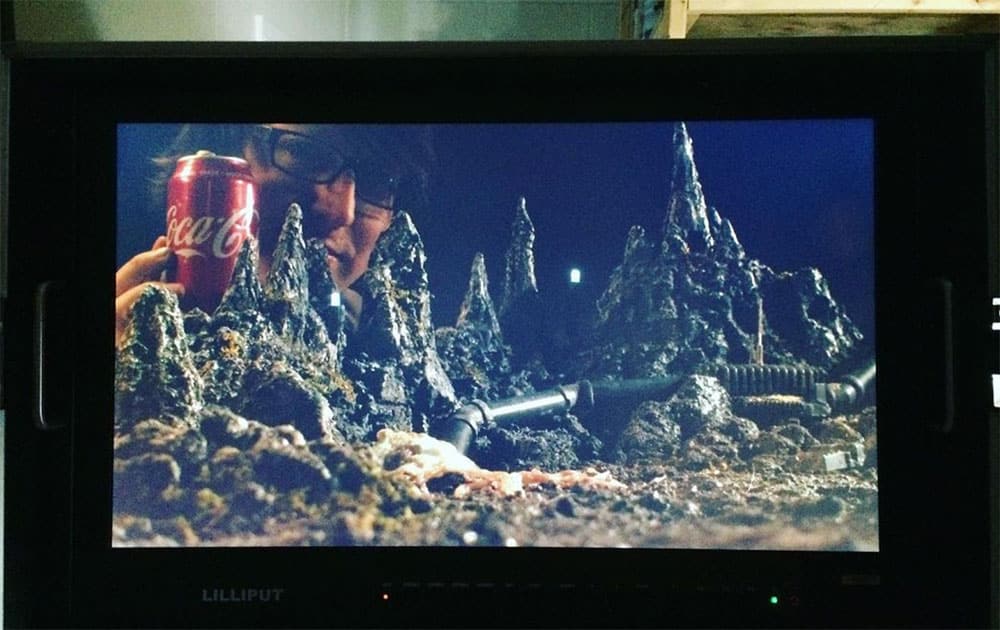
MB: You’ve mentioned before that you have always been a fan of filmmaking, and at a young age, you began borrowing your father’s Super 8 as well as making stop-motion animations. Do you remember a particular film that you experienced in your youth that lit your own fire to create?
SK: There are so many movies that contribute to that. The kind of obvious answer is the Star Wars movies because those really sparked my imagination at a young age. I think it was more specifically like when I started seeing behind-the-scenes footage from movies. There was a show called Movie Magic that I used to watch. In the age of bonus features and behind-the-scenes content being easily accessible, a show like that, which shows the making-of process of special effects and prosthetics and visual effects, was a real novelty at the time.
So seeing stuff like that really hooked me and showed me movies aren’t that inaccessible; it’s really like a bunch of guys in a shop working away, like making model kits and sculpting monsters.
I think the big one, the one I always reference, is Army of Darkness. My parents bought me that on VHS — like the Anchor Bay VHS back in the late 90s — and that had bonus features on the end of it.
There was a whole segment about KNB EFX and their creature effects shop, and I remember watching that. I think I must have about 13 or something. Seeing that and seeing all these dudes in heavy metal shirts with long hair, just pushing clay around and goofing off on set.

Making movies…it’s not that far off from me, just messing around with my friends, like shooting stuff on a video camera.
So I think that was the big turning point for me, where it made it seem accessible. Up to that point, I always felt like Hollywood and making movies was a totally unachievable goal; it’s unrealistic, so don’t even try to pursue it. As I was more exposed to behind-the-scenes content, I felt like the kind of stuff I’m doing in my basement is not that far off from this actual potential career I could have.
That was what pushed me to pursue not just filmmaking seriously but prosthetics effects as well.
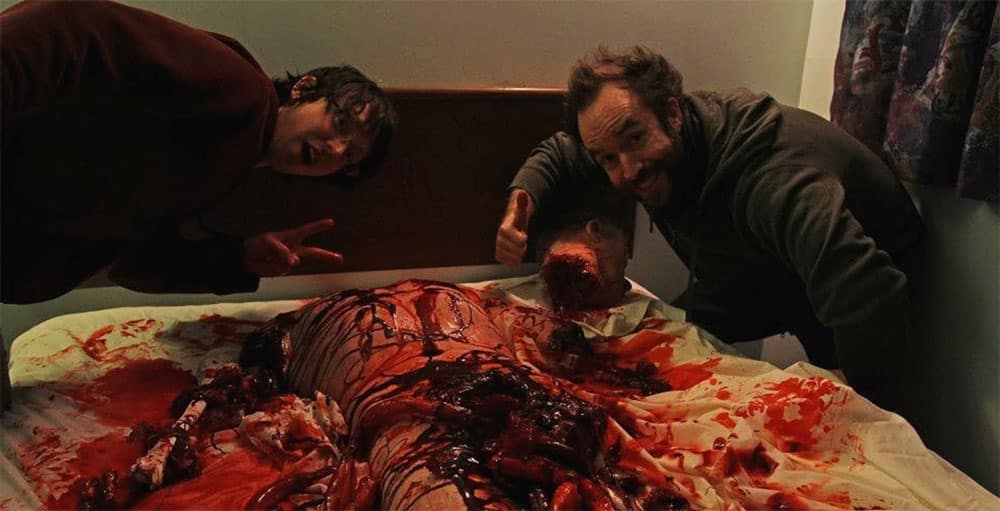
MB: You mentioned that watching Army of Darkness on VHS, the special features highlighting KNB, kind of helped push you towards pursuing a career. How does it feel to know that you may be somebody’s VHS of Army of Darkness? That somebody is looking up to you?
SK: I hope that’s the case! I feel like that is the thing to aim for. At the very least, I want some kid to see PG, or W is for Wish, or The Void, or Manborg, or something, and just be like, “I could do better than that.” And then pursue their own career in filmmaking. And I hope it inspires people to be ambitious despite maybe not having all the money in the world.
It’s all achievable. In the film industry, there’s this culture of trying to think small, especially with genre movies. And I’m so fed up with just a couple of people in a house dealing with one thing. The genre movies I grew up on — I think of stuff like The Guyver, where it’s just a ton of monsters, and there’s kung-fu, science labs, and evil doctors. That’s the kind of stuff I want to see in movies.
That’s what people are passionate about, and I want them to pursue that.
We need ambition in movies. That’s, like, the whole point of it to me, so I hope I inspire some kid out there to make their own wacky monster movie and just keep that part of the genre alive.
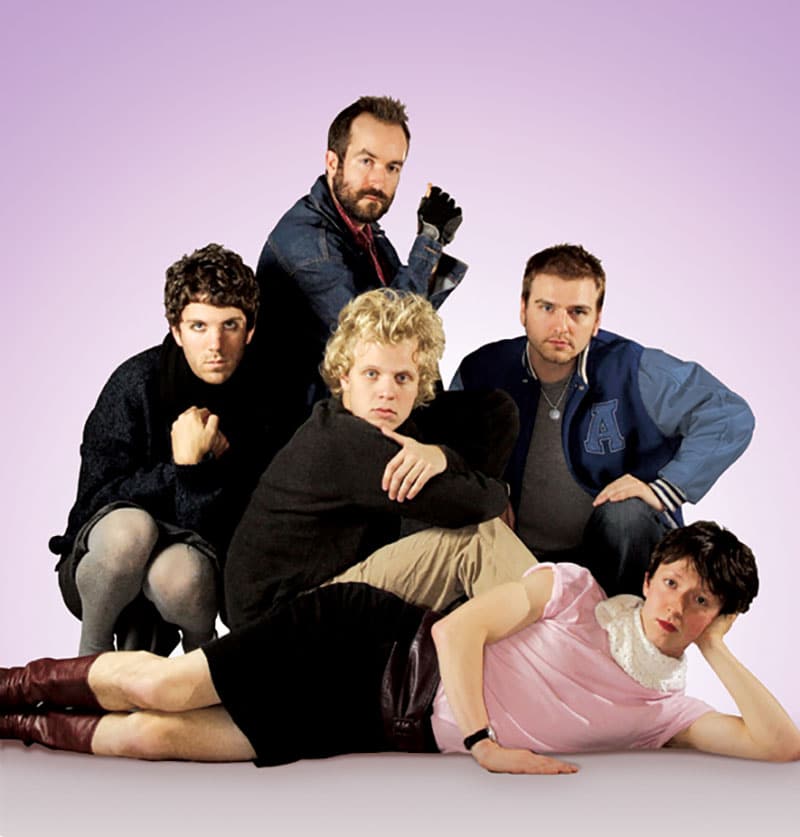
MB: Astron-6 is the wonderful collective of artists and filmmakers which you are a part of, along with Jeremy Gillespie, Adam Brooks, Matt Kennedy, and Conor Sweeney. How did you initially become a part of the team? How did the conversation start between you all to join forces?
SK: It was a kind of roundabout process that led to us all combining. I was friends with Adam initially. He was mutual friends with a friend of mine from high school, and so we were all hanging out in this mutual friend’s basement to watch a movie. I remember meeting Adam there, and he had talked to me about Troma and filmmaking. We started to connect on that level of we both make SOV horror shorts — like we should help each other out.
So, I had a little bit of a relationship started there, and Adam was the one who convinced me to submit my short films to the Short Film Massacre, which was run by Jeremy and his girlfriend at the time and was a local film festival that happened every Halloween in Winnipeg. Everybody locally would submit their short films, which was like a competition. It was this fun thing everybody did on Halloween.
That was where I became aware of Matt, Conor, and Jeremy. Jeremy running the festival, and Matt and Conor submitting their shorts.
It all started out as a bit of a competition where I think we saw each other as kind of encroaching on our turf. But then, we all started chatting and realized we had mutual interests and the same kind of passion for a very specific type of genre movie that we weren’t really getting from anyone else in our film circles. There was just an instant bond, even though we all have different personality types.
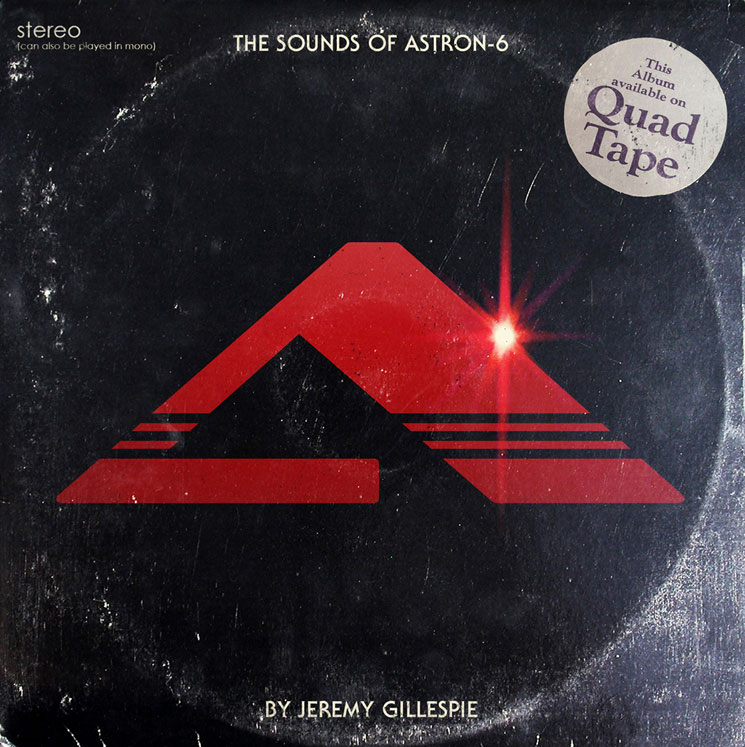
So the following year, we all made our shorts separately but included each other in different ways. Like Jeremy would make the title cards and music, Adam and Conor would act in all the stuff. I would try to do prosthetics for everything. We realized we were, in a roundabout way, forming our own little company. We should make a company logo, kind of like Vestron Video. We did it just as a one-off joke, essentially, to just put before a few of our shorts that were playing at this festival.
As the shorts played out, everybody in the audience was like, “Who are these Astron-6 people, and why are they monopolizing this film festival?”
So yeah, that was the start of this little collective of the five of us, where we’re like-minded people, and we all want to make the same kind of stuff. We were all in a good spot in our lives where it was achievable, and we could just pour a bunch of time into making short films.
In retrospect, and I’m sure all of us would agree, those were the best times, and we maybe didn’t appreciate it at the time because we all had fewer grown-up responsibilities. A lot of us were in school and things, so we had the time. So just to be able to pour that time into making shorts and stuff together was super fun, so that really was the heyday of Astron-6. This was like the end of 2006, 2007, was when it all really kicked off, and things got crazy. That’s how it all started.
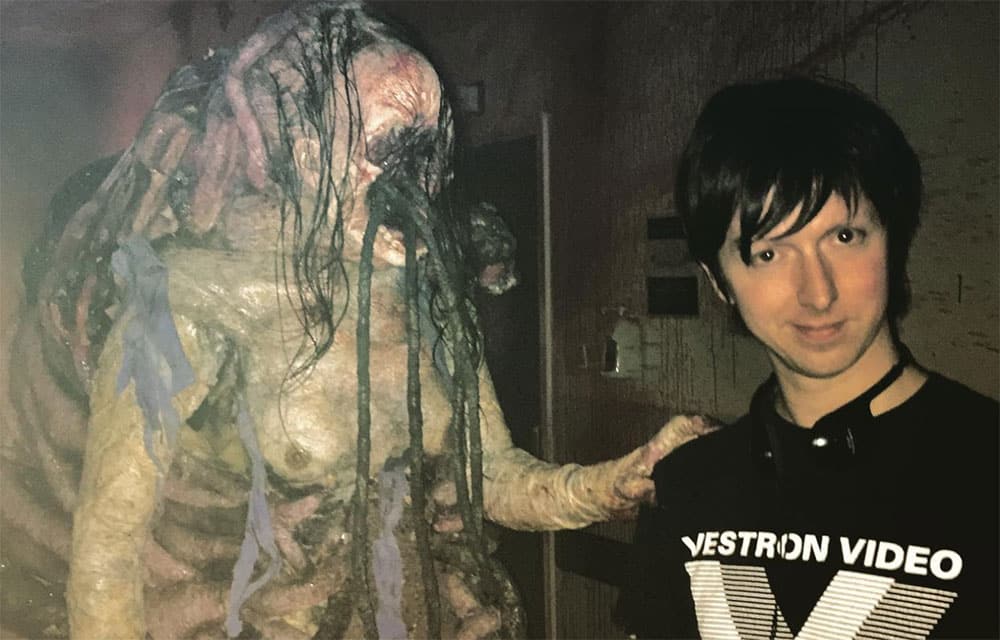
MB: I must admit that The Void is one of my favorite contemporary horror flicks, and it’s probably one of my best memories of watching a movie with my brother, Eric.
SK: That’s very cool, thank you!
MB: The Void was also a bit of a departure from the other Astron-6 endeavors. What drove you and Jeremy to create a darker, more sinister film?
SK: We were at Fantastic Fest with Manborg, which is a very goofy SOV thing that’s like… I’d barely even call it a movie. So we were at some event or something talking about what’s the next logical step, and we talked about how it would be interesting to try and make a scary monster movie. That may sound simple at first, but it really isn’t.
To make a creature-heavy movie that’s actually scary and isn’t just defaulting to pastiche or comedy and kind of leaning towards B-movie tropes; it’s difficult. We wanted it to be something serious and haunting. We set that challenge for ourselves. It was an ambitious challenge, and in retrospect, the hell we had to go through to get it made really doesn’t seem worth it to me in hindsight. But I mean, it certainly was a learning experience, which is my way of compartmentalizing what a nightmare it was and finding a spot in my brain to put it — and get over the trauma that was making that movie.
All it was was that we wanted to try and break out of the mold that we were put into, the box that we were put into of, “Oh, those guys, those Astron-6 guys, just make goofy videos that are just like 80s schlock.” And we just felt that label kind of sinking in, being like, “Is this all we’re going to do? Or do you want to try to be something different?”
The lesson that I take away from that movie is you can balance out all out better. I think you can make something like that and still have a little bit of heart to it because I feel like that movie is pretty oppressively dark. That isn’t really my personality type at the end of the day.

MB: I’ve read several times before that The Void was a really difficult experience for you both.
SK: Yeah…
MB: Please know that a lot of people love that freaking movie. I understand that was a nightmare for you, but you created something that is special. And I hope that at the end of the day, when you’re like, “Man, the time on that was horrible,” you can at least walk away knowing that there are countless fans that applaud your efforts.
SK: Thank you. I really appreciate that. I feel like it has found its audience over time, and we should have suspected that initially. It had a very lukewarm response when it came out, and that was so on par with the rest of the process of making the movie, where we saw the light at the end of the tunnel, and the light ended up just being a fizzled out firecracker. It was a pretty depressing time. But then, over the years, people have come to me with those same thoughts.
Regardless of how I feel about the final product, I think we came from — our intention — the place that we came from, both of us collectively, was something that we just wanted to see in the horrorsphere again. And it feels good to know there are people who get that, who get this kind of specific type of monster movie that we’ve wanted to see more of. And we’re glad that, ultimately, there’s an audience for that. That part does feel good.
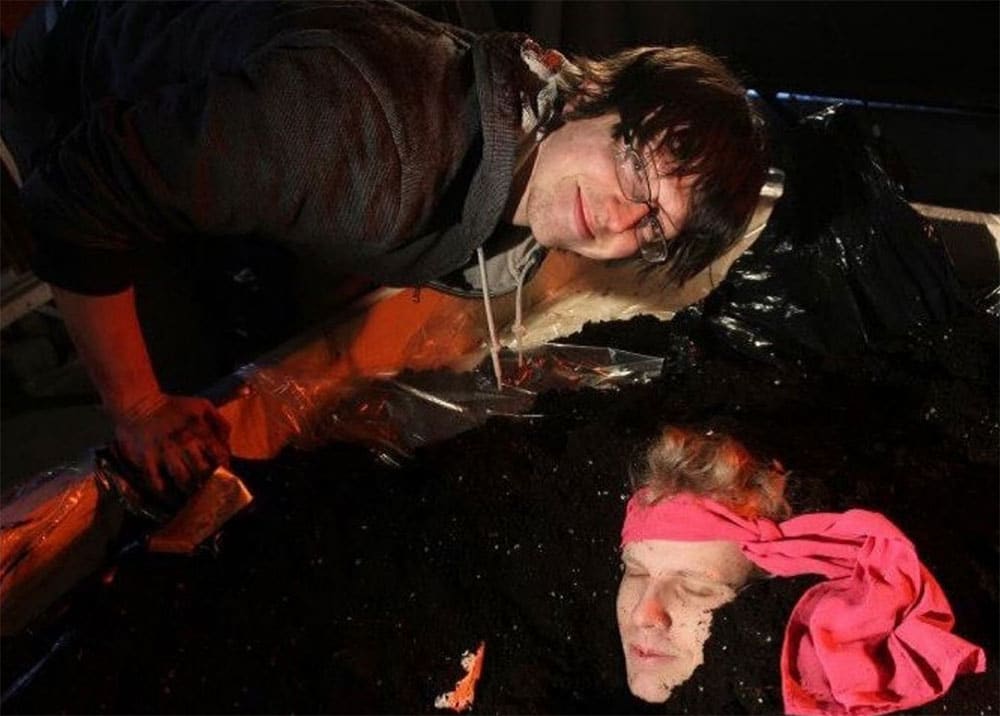
MB: If you could give your younger self any piece of advice, what wisdom would you share?
SK: It would probably be focused on getting better at art. Like work on sculpting, painting, and color theory. Maybe not the most interesting answer. It’s also not a big deal. I think that’s pretty common advice anyone would give someone in their late teens or early 20s when everything is so dramatic and explosive. Most of us in Astron-6 have mellowed out, but at the time, everything was very big and dramatic.
I felt like I was really stressed about all of these movies, and it really wore me down. So I would really love to go back and be like, “Hey, it’s not that big of a deal.” And maybe I would give myself pointers on how to budget my time better because that was another learning experience that I had to get making all these shorts. Mostly just practical advice, nothing super fun or amusing.
MB: If you could program a double feature, what two movies make your bill?
SK: Just two movies that I like?!
MB: Yep, any two movies!
SK: That is a tough one. Anything?! That opens it up so wide that it’s hard for me to come up with an answer immediately. I mean, I could go for the obvious answers of Robot Jox and Transformers, the animated movie, because I feel like those two movies sum me up pretty well. But then, at the same time, I would love to have a double bill of something like… I’m a big supporter of John Carpenter’s later-era movies.
Two movies that I would love to sit in the theater and watch would be Escape from LA and Ghosts of Mars.
MB: Oh man, that’s a great double feature.
SK: Yeah, maybe go with that one because I feel like that may be an inflammatory pick because I know many people don’t like those movies. I love them both. And I think people would appreciate them more on the big screen. Let’s go with that. Escape from LA and Ghosts of Mars.
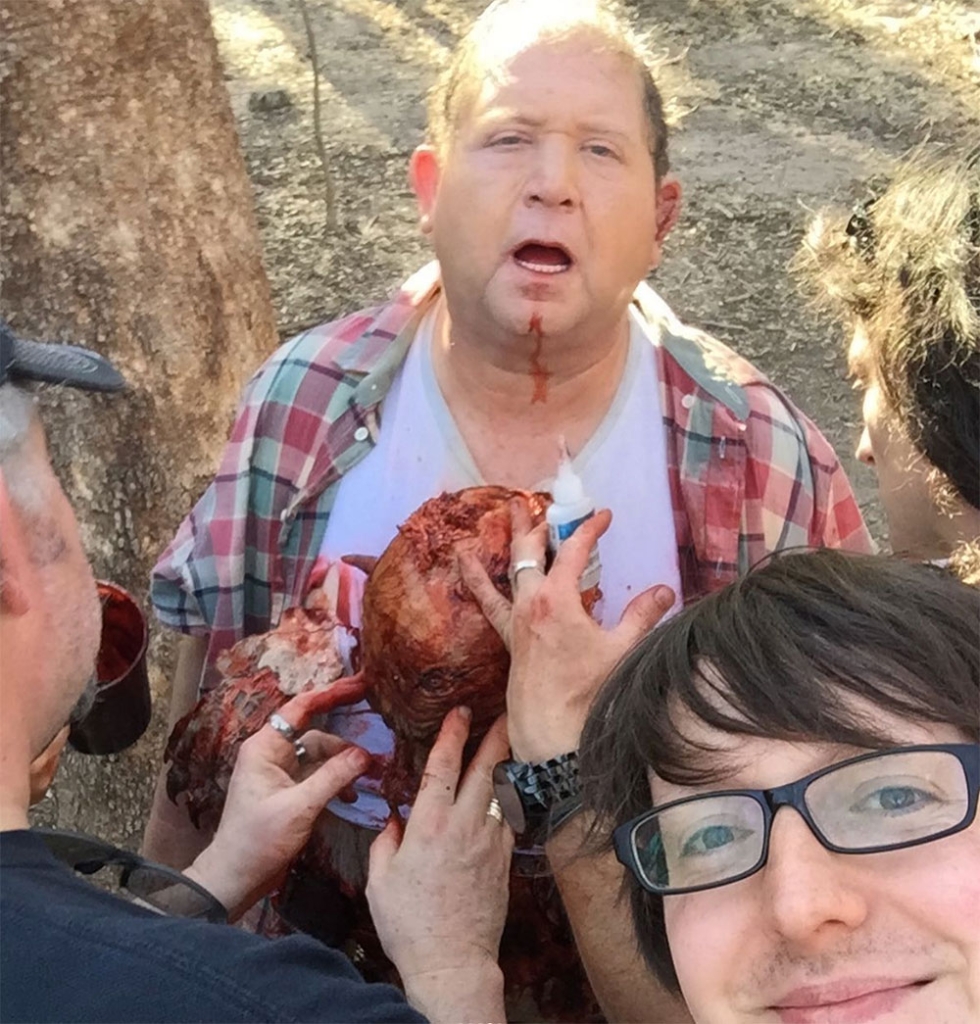


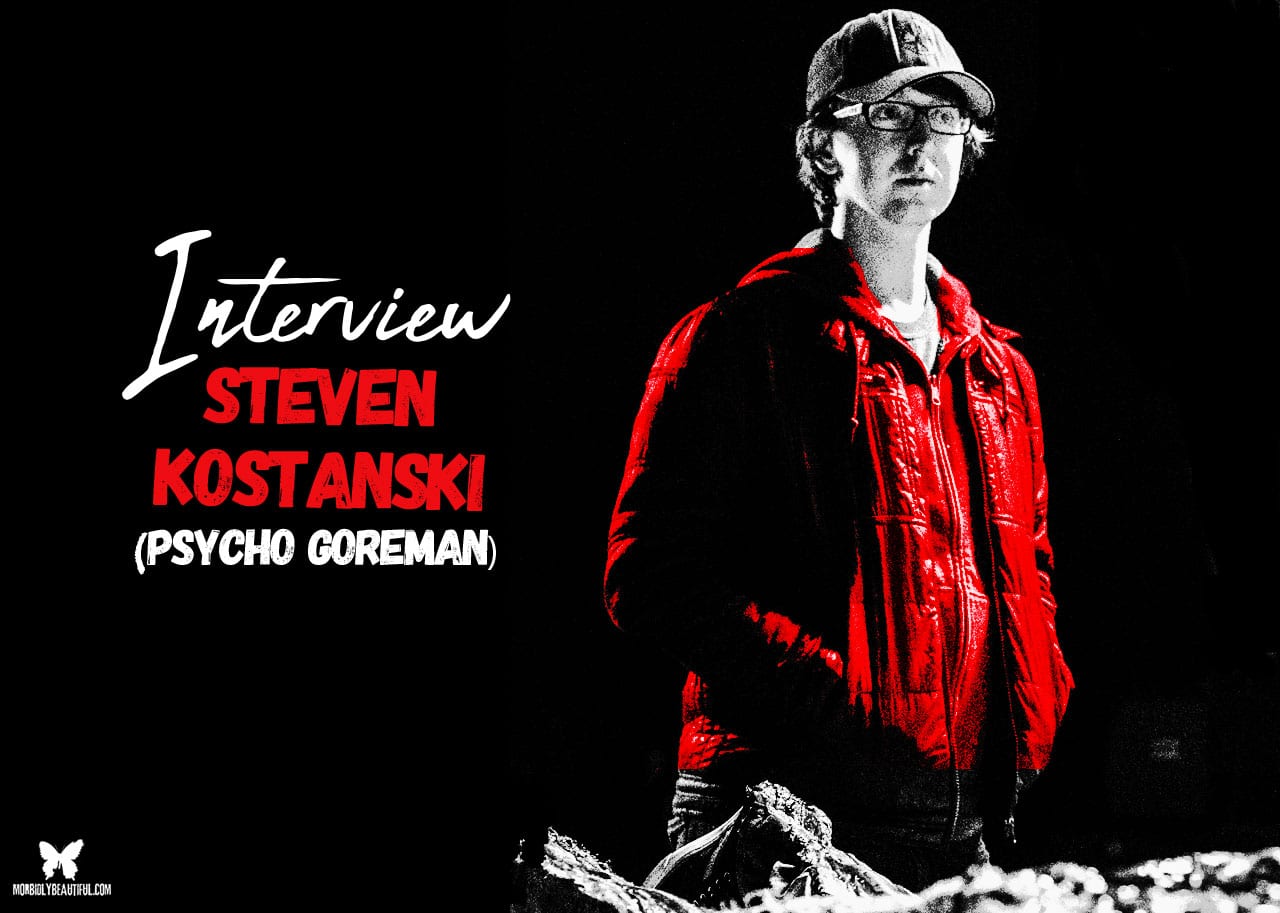
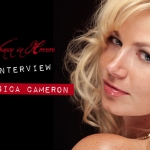
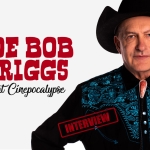
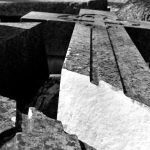







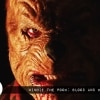
Follow Us!